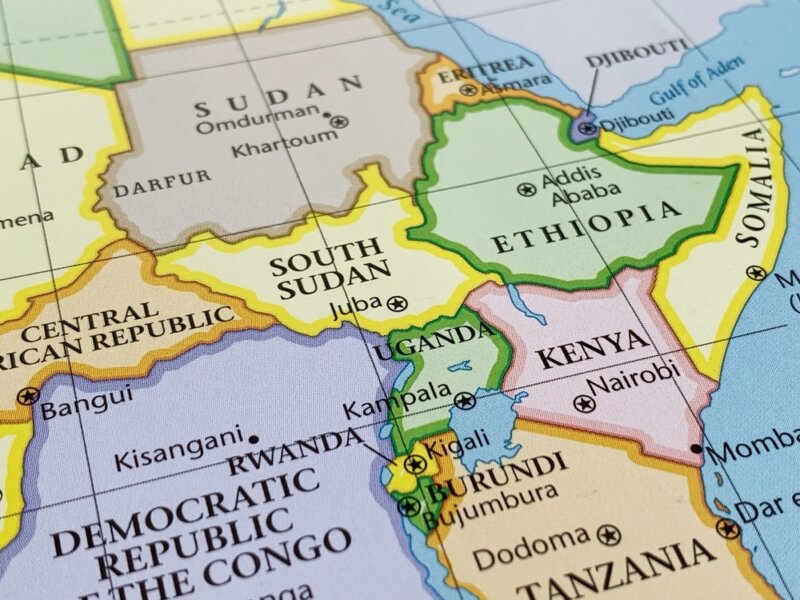India - Pakistan: se lo sport diventa politica
La recente sconfitta dell’India nella partita del Campionato Mondiale di cricket con il Pakistan ha confermato quanto la competizione sportiva legata a questo sport possa essere specchio delle tensioni e delle rivalità politiche tra i due paesi.

È proprio vero che gli Dei accecano coloro che vogliono perdere, come testimonia, nelle ore seguenti la sonora sconfitta inflitta dai Blu del Pakistan agli “invincibili” Verdi di Delhi nel Campionato Mondiale di cricket, il comportamento della polizia indiana. La quale ha arrestato sul suolo patrio alcuni tifosi che inneggiavano all’inattesa vittoria della squadra del cuore, con l’accusa di “manifesta sedizione politica” filo pakistana. Un atto subito stigmatizzato dal giornale Indian Express con il durissimo editoriale Ovation and Sedition: “This newspaper asked for the judiciary to step in and remind the State authorities that the Constitution protects free speech and celebrating the success of Pakistan, or any other team in a game against India, does not count for a crime”.
A distanza di pochi giorni, lo stesso quotidiano - visto che chi di dovere, nonostante l’abuso poliziesco, continuava a fare orecchie da mercante - è tornato alla carica, scrivendo: “There’s no evidence that their cheering was part of any incitement to violence. In Congress-ruled Rajasthan, the police arrested a schoolteacher for a social media post, again, ostensibly in support of the Pakistan cricket team. In Agra, the UP police arrested three Kashmiri students, and slapped cases against four other people. Chief Minister Yogi Adityanath has come down even harder on this fictional crime - has promised sedition charges. In each of these cases, the police is guilty of blatant violation of Constitution norms and guarantees”.
Eventi che, se letti “con gli occhi dell’Occidente” - dal titolo di uno dei più bei romanzi di Joseph Conrad -, potrebbero essere erroneamente e sbrigativamente derubricati come un classico esempio di arbitrio poliziesco da “Terzo Mondo”, ed invece rivelano problemi che agitano un’inquieta, ma enorme fetta della popolazione mondiale. Ragione per la quale, tenendo bene a mente l’ammonimento di Nirad Chaudhuri - che nel lontano 1950 scriveva: “Nobody could be more conscious than I am of the pitfalls which lie in the path of the man who wants to discover the truth about contemporary India” -, siamo arrivati alla conclusione che il cricket, da noi sconosciuto, sembrerebbe funzionare invece come una cartina tornasole dei sotterranei conflitti che agitano l’immensa ex colonia di Her Majesty d’Inghilterra, tra tutti quello tra Delhi ed Islamabad.
Tanto è vero che l’inviato del quotidiano britannico Telegraph, nell’incipit del pezzo di cronaca sulla sfida mondiale tra i due storici team rivali, aveva sentito il bisogno di ricordare ai suoi lettori che: “The India-Pakistan cricket rivalry is one of the most intense sports rivalries in the world. The tense relations between the two nations, resulting from bitter diplomatic relationships and conflict that originated during the partition of British India into India and Pakistan in 1947. The Indo-Pakistani wars, and Kashmir conflict, laid the foundations for emergence of an intense sporting rivalry between the two nations who had shared a common cricketing heritage”.
Una verità resa ancor più amaramente paradossale dal fatto che, alla fine dell’800, la rivendicazione da parte della gioventù indiana povera di avere un proprio, adeguato spazio per giocare a cricket, aveva rappresentato il primo sia pur timido atto di sfida al potere coloniale britannico. Un accenno di quella che negli anni a seguire si sarebbe poi trasformata con Gandhi in lotta per l’indipendenza. Di questa vicenda, ai più sconosciuta, si è avuta notizia solo un secolo più tardi, grazie al grande studioso indiano Ramachandra Guha. Nel 1998, quando era ancora agli inizi della carriera, Guha pubblicò sulla rivista The Past and Present Society dell’Università di Oxford, Cricket and Politics in Colonial Indian, dove, nel capitolo Native Cricket versus European Polo, raccontò quanto segue: “In October 1881, four years before the Indian National Congress was formed to advance the political rights of a subject population, a petition addressed to the Governor of Bombay defended the sporting rights of the Indians of the city […]. The petitioners began by recalling that ever since the introduction of the noble game of cricket among the native of Bombay […] more than five hundred young men of all ages and of all castes who pursue this healthful sport on the Parade ground where alone they are permitted to play [but] the prospects for native cricket had recently been threatened by two-pronged attack by European sportsmen […] The displaced Indian thought it little unfair”.
Iniziò così un lungo braccio di ferro a causa dell’ostinata opposizione “of most powerful European sportsmen over the weak and pigmy native cricketers”, che ebbe fine solo con l’arrivo dall’Inghilterra di un nuovo Governatore, ex giocatore di cricket, al quale “thousand cricketers - Hindu, Muslims and Parsis - asked pointedly if this transgression would be allowed in cricket’s original home”, convincendolo ad emanare un’ordinanza “to permit the Native Cricketers to use Esplanade Parade ground when not required by Government for military or other purposes”.
È dunque solo grazie all’inesorabilità del tempo se, a quegli eroici fan del cricket, è stato risparmiato di assistere alle sue odierne miserie.



